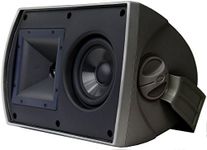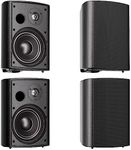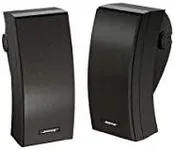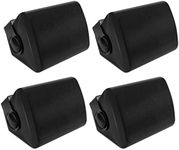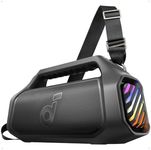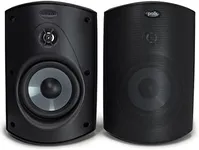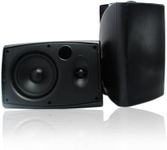Buying Guide for the Best Outdoor Patio Speakers
Choosing outdoor patio speakers is all about finding the right balance between sound quality, durability, and ease of use for your specific outdoor space. Since these speakers will be exposed to the elements, it's important to focus on features that ensure they can withstand weather conditions while still delivering clear and enjoyable audio. Think about how you plan to use the speakers—whether for background music during gatherings, lively parties, or personal relaxation—and consider the size and layout of your patio to determine how much sound coverage you need.Weather Resistance (IP Rating)Weather resistance is a measure of how well the speakers can handle exposure to elements like rain, dust, and sun. This is usually indicated by an IP (Ingress Protection) rating, such as IPX4, IPX5, or higher. The first number refers to protection against solids (like dust), and the second to liquids (like water). For outdoor use, look for at least IPX4, which means the speaker can handle splashes of water, but higher ratings like IPX6 or IP67 offer better protection against heavy rain or even temporary submersion. If your patio is covered, a lower rating may suffice, but for open areas, go for higher protection to ensure longevity.
Sound Quality and Power OutputSound quality and power output determine how well the speakers can fill your outdoor space with clear, rich audio. Power output is often measured in watts, and higher wattage generally means louder sound. For small patios, lower wattage (10-30W) may be enough, while larger or more open spaces benefit from higher wattage (50W or more). Also, consider the speaker's frequency range and clarity—look for balanced sound with good bass and crisp highs. If you want music to be the main attraction, prioritize higher sound quality and output; for background music, moderate specs will do.
Connectivity (Wired vs. Wireless)Connectivity refers to how the speakers receive audio signals. Wired speakers connect directly to an amplifier or receiver, offering reliable sound quality but requiring installation and cable management. Wireless speakers use Bluetooth or Wi-Fi, making them easier to set up and move, but they may need regular charging or access to power outlets. If you want a permanent setup and don't mind installation, wired is a solid choice. For flexibility and easy control from your phone or tablet, wireless is more convenient. Consider your patio's layout and how you plan to use the speakers when deciding.
Mounting and Placement OptionsMounting and placement options describe how and where you can install the speakers. Some are designed to be mounted on walls or under eaves, while others are freestanding or disguised as rocks or planters. Wall-mounted speakers save space and provide directed sound, while disguised or portable options blend into your landscaping. Think about your patio's design and where you want the sound to come from—choose mounting options that fit your space and aesthetic preferences.
Durability and Build MaterialsDurability and build materials affect how well the speakers stand up to outdoor conditions over time. Look for speakers made from UV-resistant plastics, rust-proof metals, and weather-sealed components. These materials help prevent damage from sun, rain, and temperature changes. If your area experiences harsh weather, prioritize rugged construction. For milder climates or covered patios, standard outdoor-rated materials may be sufficient.
Ease of Installation and UseEase of installation and use refers to how simple it is to set up and operate the speakers. Some models come with straightforward mounting hardware and clear instructions, while others may require professional installation. Wireless speakers are generally easier to set up, but may need pairing with your devices. Consider your comfort level with DIY projects and how often you plan to move or adjust the speakers. If you want a hassle-free experience, look for user-friendly designs and clear setup guides.


